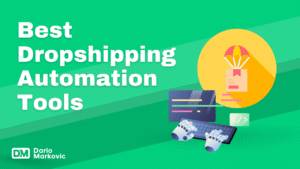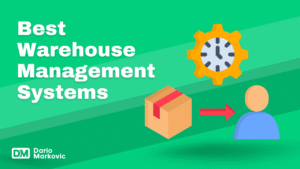Looking for simple ways to start a business with minimal daily effort?
I wrote this article on automated business ideas for beginners to present 11 easy ways to create passive income.
Learn about dropshipping, affiliate marketing, and other strategies that leverage technology for efficient operations. It is perfect for those exploring entrepreneurship with little technical know-how.
Understanding Automated Business Ideas for Beginners
Automated business ideas leverage technology to streamline operations and generate revenue with minimal effort. Using automation tools, you can focus on growth and strategy instead of repetitive tasks.
According to a study by McKinsey, automation technologies could affect 50% of the world economy, equivalent to 1.2 billion employees and $14.6 trillion in wages (Source: McKinsey Global Institute, 2023).
Platforms and software handle content curation, social media sharing, and digital product creation, providing consistent income with little involvement. This approach frees up time for innovation and expansion.
Starting an automated business offers passive income and requires minimal technical skills, making it accessible to everyone. Success depends on proactive strategies, adaptability, and continuous improvement. While challenges include increased customer inquiries and marketing efforts, the benefits far outweigh the initial learning curve.
Definition of an Automated Business
An automated business leverages technology to streamline operations and minimize manual workloads. By utilizing automation tools and software, these businesses can perform repetitive tasks efficiently, freeing up time for more strategic and creative endeavors.

Benefits of Automation
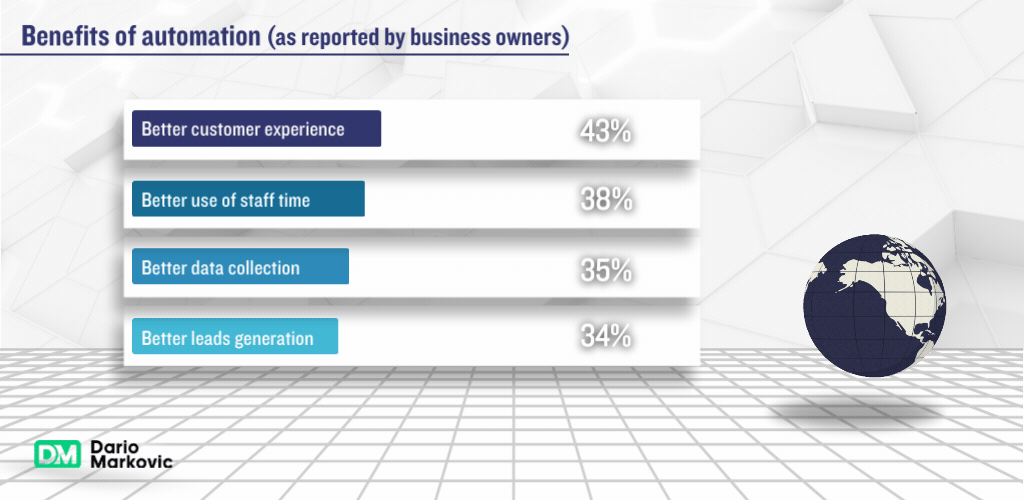
What Are Automated Business Ideas?
Automated business ideas involve using technology and software to streamline tasks and processes, reducing the need for manual intervention.
These ideas can range from e-commerce stores with automated inventory management to subscription services that use automated billing and customer interactions.
Examples of the best automated business ideas include:
Creating an e-commerce dropshipping platform where suppliers handle inventory and shipping
Promote products or services through Affiliate Marketing
Create a Print-on-Demand Store on Shopify and sell your products online
Automation tools such as chatbots are also used to manage customer interactions autonomously, further enhancing the efficiency of these businesses.
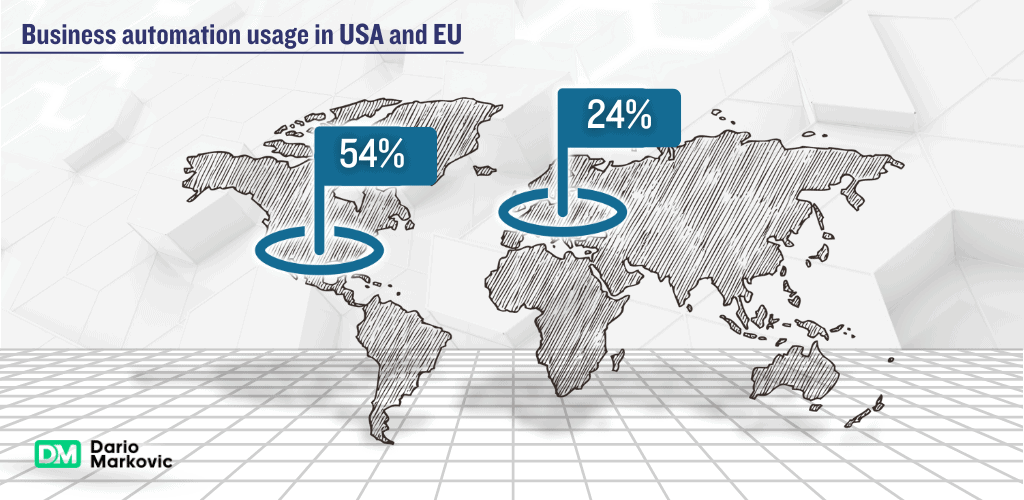
11 Automated Business Ideas for Beginners
1. Dropshipping
Dropshipping is a simplified e-commerce business model that allows entrepreneurs to sell products online without holding physical inventory.
This model is especially attractive for beginners due to its minimal investment requirements and user-friendly platforms like Shopify, BigCommerce, and OpenCart, which handle the technical aspects.
The dropshipping global market was valued at $419.8 billion in 2024 and is projected to reach $1.5 trillion by 2030, growing at a CAGR of 23.1% [Source: Research and Markets, 2024].

Getting Started with Dropshipping
Aspiring entrepreneurs intending to establish a drop shipping business should follow these steps:
Research and Choose a Niche:
Analyze market trends using tools like Google Trends
Evaluate competition using Jungle Scout or Helium 10
Identify products with high-profit margins and low shipping costs
Find Reliable Suppliers:
Research suppliers on platforms like AliExpress, Spocket, or SaleHoo
Order samples to verify product quality
Check supplier reviews and communication responsiveness
Set Up Your Shopify Online Store :
Choose an e-commerce platform like Shopify or WooCommerce
Select a professional theme and customize your store design
Install necessary apps/plugins for best dropshipping automation tools
Implement Automation Tools:
Develop Marketing Strategies:
Create social media accounts for your brand
Set up Google Analytics to track store performance
Plan advertising campaigns on Facebook, Instagram, or Google
Case Study: Successful Dropshipping Business
Sarah’s Pet Accessories started as a small dropshipping store focused exclusively on premium pet accessories. Sarah began with a $500 investment in 2022, focusing on unique, high-margin items not commonly found in local pet stores.
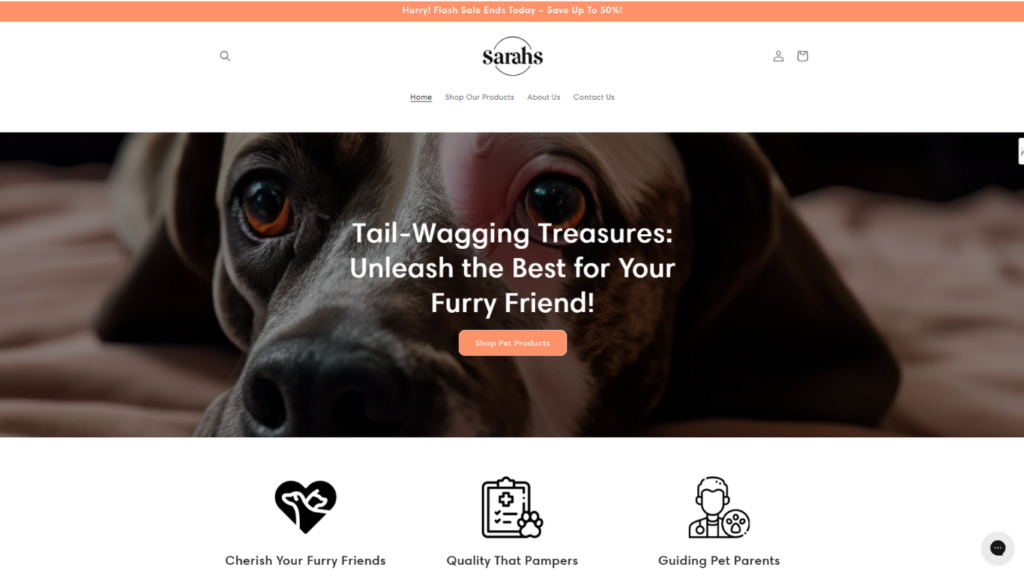
Tools Used
E-commerce Platform: Shopify Premium Plan ($29/month)
Supplier Integration: Oberlo app (initially free, later $29.90/month)
Order Automation: AutoDS ($29/month) for automated fulfillment
Email Marketing: Klaviyo (free tier initially) for automated email sequences
Customer Service: Gorgias helpdesk ($10/month)
Design: Canva Pro ($12.99/month) for graphics and mockups
Social Media Management: Buffer ($15/month) for scheduled posting
Integration: Zapier ($19.99/month) connecting Shopify with other platforms
Analytics: Google Analytics 4 and Shopify Analytics
Marketing Strategies
Paid Advertising:
Facebook/Instagram ads ($10/day initially) with lookalike audiences
Google Shopping ($300/month) implemented in month 4
Achieved 2.7x return on ad spend after optimization
Organic Growth:
Instagram content strategy (5 posts weekly) featuring customer-generated content
Pinterest product pins and idea boards (generated 30% of organic traffic)
“The Conscious Pet Owner” blog with SEO-optimized content
Guest posting on established pet blogs for backlinks
Customer Retention:
Multi-stage post-purchase email sequence
Points-based loyalty program for purchases, reviews, and referrals
Achieved 35% repeat customer rate by month 6
Challenges Faced
Inventory Management:
Frequent stockouts damaged customer trust
Solution: Developed forecasting system and stock alerts with suppliers
Shipping Delays:
15-25 day shipping times from Chinese suppliers
Solution: Clear communication, order tracking, and engaging email sequences
Quality Control:
Inconsistent product quality across suppliers
Solution: “Three Strikes” supplier policy, detailed specifications, and hassle-free returns
Growing volume of inquiries became unmanageable
Solution: Comprehensive FAQ, response templates, chatbot implementation, and virtual assistant hire
Sarah’s success largely came from her strategic approach to these challenges, combined with her focused niche selection and systematic testing of both products and marketing approaches.
Pros and Cons of Dropshipping
Pros:
Low startup costs (as little as $100-500)
No inventory management or warehousing costs
Location independence – run your business from anywhere
Easy to test multiple products without financial risk
Scalable business model with unlimited growth potential
Cons:
Lower profit margins (typically 15-30%) compared to traditional retail
Highly competitive market in popular niches
Limited control over shipping times and product quality
Customer service challenges when issues arise with suppliers
Potential brand reputation risks if suppliers don’t deliver as promised
Choosing Reliable Suppliers and Avoiding Counterfeit Products
Importance of Reliable Suppliers
Selecting trustworthy suppliers is arguably the most critical decision in dropshipping. Since suppliers handle your inventory, shipping, and product quality, they essentially become an extension of your business.
When suppliers perform poorly, your business suffers directly:
Late or missed shipments damage customer trust
Poor product quality leads to returns and negative reviews
Inconsistent inventory updates can cause overselling
Strategies to Avoid Counterfeit Products
Counterfeit products present serious legal and reputational risks:
Thorough Supplier Verification: Research potential suppliers extensively before partnering. Check business licenses, operational history, and manufacturing capabilities.
Order Product Samples: Always test products personally before listing them. This helps verify quality and authenticity.
Check Supplier Reviews: Look for detailed reviews from other dropshippers on platforms like Trustpilot or supplier-specific forums.
Verify Product Authenticity: For branded items, confirm suppliers have proper authorization to sell those products. Request certificates of authenticity when applicable.
Pricing Analysis: Be wary of suppliers offering brand-name products at unusually low prices—this is often a red flag for counterfeits.
Risks of Relying on Third-Party Suppliers
Shipping Risks
When you depend on suppliers for shipping:
Limited Control Over Delivery Times: You can’t guarantee specific delivery dates to customers, which can be problematic for time-sensitive purchases.
Inconsistent Shipping Methods: Different suppliers may use various shipping carriers, making order tracking complicated for customers with multiple items.
International Shipping Complications: Cross-border shipments may face customs delays, additional fees, or regulatory issues beyond your control.
Customer Service Challenges
Problem Resolution Delays: When issues arise, you become the middleman between unhappy customers and suppliers, often leading to extended resolution times.
Limited Information Access: You may not have real-time updates about inventory, manufacturing delays, or shipping problems.
Brand Reputation Impact: Customers associate their experience with your brand, not your suppliers. Poor supplier performance directly damages your business reputation.
Return Processing Complications: Managing returns can be complex when products ship directly from suppliers, requiring clear policies and procedures.
To mitigate these risks, successful dropshippers typically:
Maintain relationships with multiple suppliers for critical products
Create clear communication channels with suppliers
Develop contingency plans for supply chain disruptions
Set realistic customer expectations regarding shipping and delivery
2. Affiliate Marketing for Beginners
Affiliate marketing constitutes a venture with low cost and risk, where you promote products or services and earn a commission on sales. According to Statista, affiliate marketing spending in the U.S. is expected to reach $ billion by 2025, up from $9,56 billion in 2023 (Source: Statista, December, 2024).
This business model is ideal for beginners because it:
Requires minimal investment
Allows individuals to focus on creating valuable content
Allows individuals to recommend products relevant to their niche or audience

Getting Started with Affiliate Marketing
Choose Your Niche:
Build Your Platform:
Create a website using WordPress with hosting from Bluehost or SiteGround
Start a YouTube channel or podcast if you prefer video or audio content
Establish social media accounts aligned with your niche
Join Affiliate Programs:
Sign up for affiliate networks like Amazon Associates, ShareASale, or CJ Affiliate
Apply directly to company affiliate programs in your niche
Compare commission rates, cookie duration, and payment terms
Create Quality Content:
Develop product reviews, comparisons, and tutorials
Write helpful how-to guides and problem-solving content
Create resource pages with your top affiliate recommendations
Implement Tracking and Optimization:
Set up Google Analytics to monitor traffic and conversions
Use affiliate link management tools like ThirstyAffiliates or Pretty Links
A/B test different content types, calls to action, and affiliate products
Case Study: Successful Affiliate Marketing Business
TechGearLab began as a simple blog reviewing tech gadgets and accessories. The founder, Mike, was a tech enthusiast with no previous marketing experience.

Platform: WordPress website with a focus on detailed, honest product reviews
Niche Selection: Specialized in best smart home devices and wearable technology
Content Strategy: Created in-depth comparison articles and “best of” lists based on actual product testing
Monetization: Primarily Amazon Associates, with direct brand partnerships for higher-commission products
Growth Trajectory: Started earning $200/month, reached $5,000/month within 18 months
Automation: Used email autoresponders, content scheduling, and automated social media posting to reduce workload
Pros and Cons of Affiliate Marketing
Pros:
Zero product creation or inventory costs
No customer service or product fulfillment responsibilities
Flexibility to work from anywhere on your own schedule
Unlimited earning potential with passive income opportunities
Ability to leverage existing brands’ reputation and customer trust
Cons:
Commission rates can be low (typically 1-10% for physical products)
Highly dependent on search engine rankings and algorithm changes
Often requires significant upfront content creation before substantial earnings
Competition from other affiliates promoting the same products
No control over product availability, pricing, or commission structure changes
Building Trust: The Foundation of Successful Affiliate Marketing
Success in affiliate marketing fundamentally depends on building genuine trust with your audience. Without this trust, even the best content and affiliate products will fail to convert.
How to Build Trust with Your Audience:
Only recommend products you’ve personally used or thoroughly researched
Disclose affiliate relationships transparently in accordance with FTC guidelines
Share both pros AND cons of products to provide balanced perspectives
Respond to audience questions and concerns promptly and honestly
Show your real experiences with products through photos, videos, or detailed accounts
Maintain consistency in your recommendations and brand partnerships
Prioritize audience needs over commission potential when making recommendations
Creating High-Quality, Engaging Content
Creating content that stands out and genuinely helps your audience is essential for affiliate marketing success.
Content Creation Tips:
Solve real problems your audience faces rather than simply promoting products
Create comparison content that helps users make informed decisions between similar options
Use multimedia formats (images, videos, infographics) to increase engagement
Write comprehensive guides that position you as an authority in your niche
Share personal stories and case studies to make content relatable and authentic
Update content regularly to maintain accuracy and relevance
Focus on SEO best practices without sacrificing readability and user experience
Create content series that keep audiences coming back for more information
Develop unique content angles that differentiate from what competitors are producing
The Reality of Affiliate Marketing Income
While affiliate marketing can be lucrative, it’s important to have realistic expectations about the time and effort required.
Typical Timeline to Income:
Months 1-3: Building foundation with minimal or no income ($0-50/month)
Months 4-6: Beginning to see occasional commissions as content ranks ($50-200/month)
Months 6-12: Growing steady but modest income with consistent effort ($200-500/month)
Months 12-24: Potential for significant growth if you’ve built authority ($500-2,000/month)
Years 2-3: Possibility of full-time income for successful affiliates with substantial traffic
Important factors affecting timeline:
Niche competitiveness and commission rates
Content quality and publication frequency
SEO effectiveness and backlink building
Audience engagement and trust level
Diversification of traffic sources
Remember that these figures vary widely and success stories like TechGearLab are possible but not guaranteed. Many affiliate marketers never reach full-time income levels, while others exceed these numbers significantly.
Diversification Strategies
To build sustainable affiliate income:
Promote products at different price points
Use multiple affiliate networks and programs
Develop diverse traffic sources (SEO, social media, email)
Create content in various formats to reach different audience segments
Consider supplementing with other monetization methods like digital products or services
By focusing on building genuine trust, creating truly valuable content, and maintaining realistic expectations about the time investment required, you’ll set yourself up for sustainable success in affiliate marketing.
3. Selling Digital Products
The sale of digital products is a seamless method to generate passive income, as they necessitate no inventory and can be directly sold from a website.
According to Statista, the e-learning market alone is projected to reach $457.8 billion by 2026 (Source: Statista, 2023).
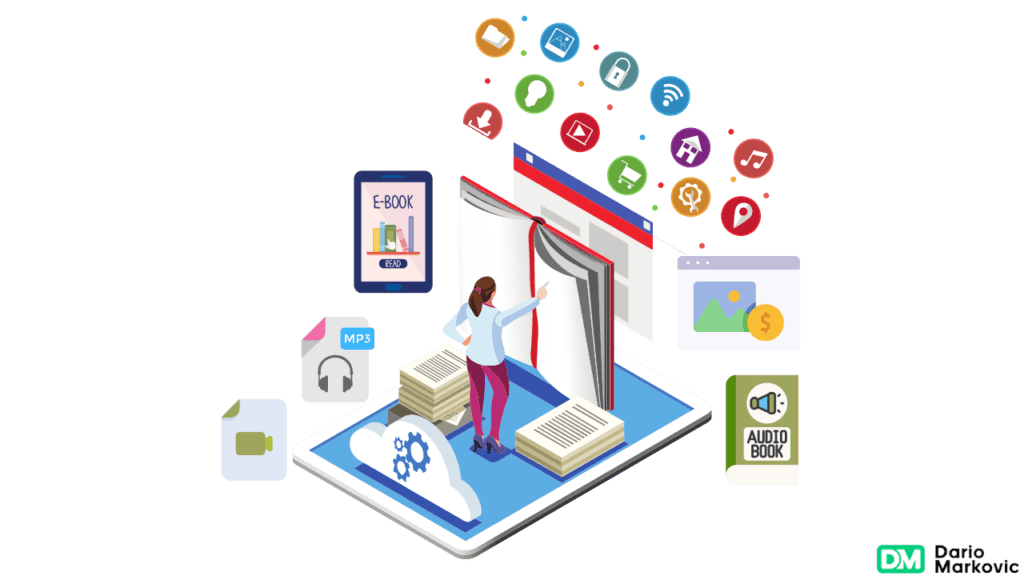
Getting Started with Digital Products
Identify Your Expertise and Market Demand:
Research popular topics and products using Google Trends and keyword research tools
Analyze bestsellers on platforms like Gumroad and Etsy
Survey your existing audience or email list about their needs
Create Your Digital Product:
For ebooks: Use tools like Canva or Google Docs for writing and formatting
For courses: Record videos using Camtasia or Screenflow
For templates: Design with Adobe Creative Suite or Canva
Set Up Your Sales Platform:
Create accounts on marketplaces like Etsy, Creative Market, or Gumroad
For self-hosting: Set up WooCommerce or Easy Digital Downloads on WordPress
Automate Delivery and Marketing:
Set up automated delivery systems for instant product access
Create email marketing sequences with ConvertKit or Mailchimp
Scale Your Product Line:
Create complementary products based on customer feedback
Develop different tiers or bundles to increase average order value
Implement affiliate programs to let others promote your products
Case Study: Successful Digital Product Business
DesignPack Pro started when graphic designer Lisa created a set of social media templates for her own use and decided to sell them online.
Product Creation: Lisa designed 20 Instagram post templates in Canva
Platform Selection: Initially sold on Creative Market, later expanded to her own website
Pricing Strategy: Started at $19 per template pack, later created bundles up to $97
Marketing Approach: Shared free templates to build an email list, used Pinterest to drive traffic
Expansion: Added template packs for different niches (fitness, food, fashion) and platforms (Instagram, Pinterest, Facebook)
Automation: Set up instant delivery, customer support templates, and automated cross-selling emails
Monthly Revenue: Grew from $500 to $8,000 within 12 months with 90% profit margin
Pros and Cons of Selling Digital Products
Pros:
Extremely high profit margins (often 90%+)
Create once, sell infinitely with no inventory costs
Instant delivery without shipping or fulfillment hassles
Location independence and complete flexibility
Easy to update, improve, or bundle products over time
Cons:
Significant upfront time investment to create quality products
Digital piracy and unauthorized sharing of your products
Market saturation in popular niches
Continuous need for marketing to maintain visibility
Technical challenges with setting up delivery systems
Types of Digital Products
Digital products include:
-
ebooks
-
online courses
-
templates
-
printable art
These products have the potential to be sold through various channels, such as online marketplaces or e-commerce platforms. Additionally, self-hosted websites can also utilize payment processors and digital delivery systems for sales.
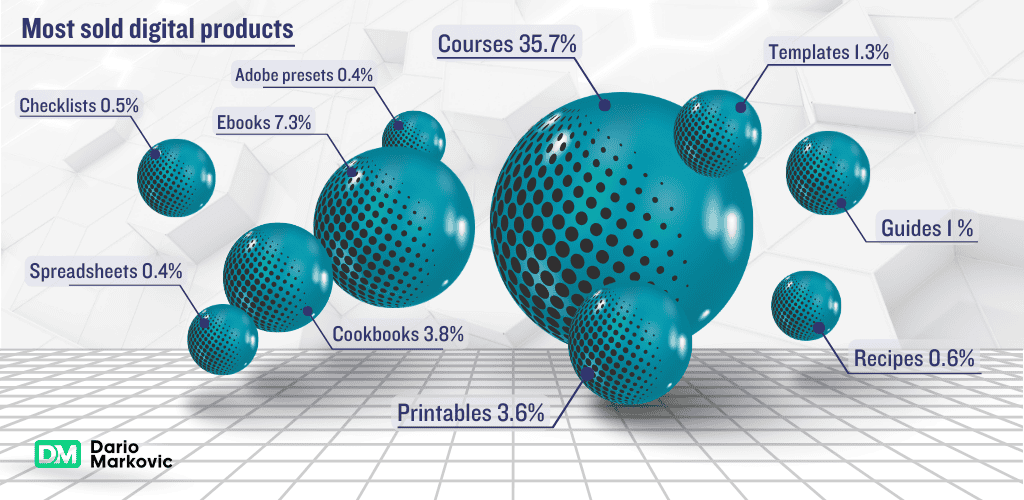
Platforms for Selling Digital Products
Many platforms for selling digital products are available, each boasting unique features and benefits. Gumroad is a popular platform allowing creators to sell digital products directly to customers with a simple setup process and 3.5% + $0.30 transaction fee.
Teachable is another platform that is great for selling digital products and building membership websites, offering comprehensive course-building tools with plans starting at $39/month.
Udemy is widely used for selling online courses, providing extensive reach to potential students worldwide but requires revenue sharing of 50-75% for instructor-promoted sales.
Protecting Digital Products from Piracy
Digital piracy is indeed mentioned as one of the challenges of selling digital products.
Here are strategies to protect your intellectual property:
Use Digital Rights Management (DRM)
Implement password protection on PDF files
Use specialized DRM software that limits copying, sharing, or printing
Consider watermarking documents with the buyer’s information
Controlled Access
Host courses on platforms with secure login systems (like Teachable)
Use download limits per purchase
Implement IP monitoring to detect suspicious access patterns
Legal Protection
Copyright your work formally before selling
Include clear terms of use with each product
Add copyright notices on every page/slide
Technical Measures
Disable right-clicking on web-based content
Break large products into smaller modules delivered over time
Use secure delivery systems that verify legitimate purchases
Community Building
Create product value through community access or support
Offer regular updates that only paying customers receive
Provide personalized elements that make piracy less attractive
Pricing Digital Products
Pricing is crucial for digital product success.
Here’s guidance based on best practices:
Research-Based Pricing
Analyze competitor pricing in your niche
Consider the perceived value rather than just production costs
Test different price points with similar products
Value-Based Strategies
Price based on the problem you solve, not just content volume
Consider the time/money your product saves customers
Factor in your expertise and unique perspective
Tiered Pricing Models
Offer different versions (basic, standard, premium)
Create bundles of complementary products
Consider subscription models for ongoing content
Psychological Pricing
Use price anchoring (showing higher prices first)
Implement charm pricing ($97 instead of $100)
Offer payment plans for higher-priced items
Launch Strategies
Start with introductory pricing to gather testimonials
Use early-bird discounts to reward early adopters
Plan strategic sales periods while maintaining perceived value
From the case study, we can see Lisa started at $19 per template pack and later created bundles up to $97, which demonstrates a smart scaling strategy that increased her average order value over time.
4. Print on Demand: Custom Merchandise
Print-on-demand lets sellers offer custom merchandise without holding inventory, reducing costs and risks. It’s perfect for artists, designers, and entrepreneurs.
According to Grand View Research, the global print-on-demand market size was valued at $4.9 billion in 2021 and is expected to grow at a CAGR of 26.1% from 2022 to 2030 (Source: Grand View Research, 2023).
Platforms like Printful and Printify handle the technical side, so you can focus on designing and marketing.

Getting Started with Print-on-Demand
Develop Your Design Concept:
Identify trending styles and themes using tools like Google Trends and Pinterest
Create or source original designs using Adobe Illustrator, Canva, or Procreate
Define your brand identity and target audience
Choose Your Print-on-Demand Partner:
Research providers like Printful, Printify, and SPOD
Compare product quality, pricing, shipping times, and integration options
Order samples to verify product quality before selling
Set Up Your Sales Channels:
Create a store on Etsy, Shopify, or WooCommerce
Connect your store to your POD provider using their integration apps
Configure shipping rates, tax settings, and product descriptions
Price Your Products Strategically:
Research competitor pricing in your niche
Calculate your desired profit margin (typically 30-50% above base costs)
Consider bundling or volume discounts to increase average order value
Market Your Products:
Create lifestyle product photos using mockup generators
Develop a social media strategy focused on visual platforms
Consider influencer partnerships and targeted advertising
Case Study: Successful Print-on-Demand Business
NatureLover Apparel was started by Alex, an outdoor enthusiast with basic design skills but no previous business experience.
Niche Selection: National parks and outdoor adventure-themed apparel
Platform: Shopify store with Printful integration
Initial Investment: $200 for Shopify subscription and sample products
Product Range: T-shirts, hoodies, mugs, and posters featuring original designs
Marketing Strategy: Instagram content featuring customers wearing products in outdoor settings, targeted Facebook ads to outdoor enthusiasts
Growth: From 5 orders in month one to over 200 monthly orders within a year
Automation: Completely automated order fulfillment and shipping notification system
Monthly Revenue: $12,000 with 40% profit margin after marketing expenses
Pros and Cons of Print-on-Demand
Pros:
No upfront inventory investment or risk
No need for storage space or shipping logistics
Easy to test new designs without financial commitment
Broad range of customizable products (clothing, accessories, home decor)
Seamless integration with major e-commerce platforms
Cons:
Lower profit margins compared to bulk printing (typically 20-30%)
Limited control over product quality and shipping times
Higher per-item costs than traditional manufacturing
Restricted customization options depending on the provider
Competitive market with low barriers to entry
Creating Unique Designs
Creating unique designs that connect with your target audience is key to amplifying sales in print-on-demand businesses. Utilizing trends and popular culture can help create designs that resonate more with your target audience.
Incorporating trending themes and seasonal elements into your designs can boost sales and appeal to a broader audience.
Additionally, high-quality graphics and clear, crisp images are essential for ensuring your designs look professional and attractive on printed merchandise.
Choosing Print-on-Demand Platforms
Top print-on-demand platforms include Etsy, Printful, and SmugMug. Printful and Printify integrate with major e-commerce platforms for easy store setup and management.
Printful has in-house fulfillment centers for quality control, while Printify connects sellers with various third-party providers, offering diverse products and closer shipping options
Marketing Your Merchandise
Leveraging social media platforms like Instagram and Facebook with influencer marketing for ecommerce can vastly increase visibility and engagement for your print-on-demand products.
Some strategies to consider include:
Creating eye-catching and visually appealing posts to showcase your products
Using relevant hashtags to reach a wider audience
Engaging with your followers by responding to comments and messages
Collaborating with influencers to showcase your merchandise to a larger audience and build credibility for your brand
By implementing these strategies, you can effectively market your print-on-demand products and drive more sales.
Design Quality and Brand Building in Print-on-Demand
The quality of your designs is perhaps the most critical factor in print-on-demand success. When customers can choose from countless options, distinctive, professional designs help your products stand out.
Strong branding creates recognition and customer loyalty over time.
Effective brand building in print-on-demand involves:
Creating a consistent visual identity across products
Targeting a specific niche or audience
Telling a compelling brand story
Maintaining quality standards in both design and physical products
Building an engaged community around your brand
Print-on-Demand Product Types and Profitability
Different print-on-demand products offer varying profit potential:
Apparel
T-shirts: The most popular POD item with moderate profit margins ($5-15 per sale)
Hoodies and sweatshirts: Higher price points allow for better margins ($10-25)
Leggings and athletic wear: Growing market with good margins ($8-20)
Home Goods
Posters and wall art: Low production costs with high markup potential ($8-25)
Mugs and drinkware: Everyday items with decent margins ($5-12)
Throw pillows and home decor: Higher-end items with better profit margins ($10-20)
Accessories
Phone cases: Low production cost with good margins ($5-15)
Tote bags: Eco-friendly option with moderate profits ($5-15)
Jewelry and personalized items: Higher perceived value allows premium pricing ($10-30)
Books and Stationery
Custom journals and notebooks: Good margins with less competition ($6-15)
Calendars and planners: Seasonal items with solid profit potential ($8-20)
5. Starting a Blog for Passive Income
Starting a blog is a great way to earn passive income by sharing your expertise. Choose an evergreen niche like health, finance, or relationships to attract consistent traffic.
According to FourthWall, a successful niche blog can earn between $2,000 and $10,000 per month within two years of consistent content creation (Source: Income School, 2023).
Use SEO strategies to boost visibility and attract readers. Implementing these SEO strategies can also attract customers by engaging your target audience and building a community.
Monetize your blog with ads, sponsorships, and affiliate marketing to create multiple income streams.

Getting Started with a Blog
Select Your Blogging Platform:
Set up a self-hosted WordPress site with Bluehost or SiteGround
Choose a fast, mobile-responsive theme from Astra or GeneratePress
Install essential plugins like Yoast SEO, Akismet, and a caching solution
Develop a Content Strategy:
Create High-Quality Content:
Write comprehensive, helpful articles that solve reader problems
Include images, videos, and infographics to enhance engagement
Format content for readability with subheadings, bullet points, and short paragraphs
Implement Traffic Generation Strategies:
Focus on SEO optimization for long-term organic traffic
Build an email list with lead magnets and opt-in forms
Share content on social media platforms where your audience is active
Monetize Your Blog:
Case Study: Successful Blog
EveryDayHealth was started by Jennifer, a certified nutritionist who wanted to share her knowledge about healthy eating on a budget.

Niche Selection: Budget-friendly nutrition and meal planning
Platform: Self-hosted WordPress with a focus on recipe content
Content Strategy: Published twice weekly, focusing on easy healthy recipes and meal prep guides
Traffic Growth: Started with 100 visitors/month, reached 100,000 monthly visitors after 18 months
Monetization Mix: 40% display ads (Mediavine), 30% affiliate income (cooking tools, ingredients), 30% digital products (meal plans, recipe ebooks)
Automation: Used scheduling tools for content and social media, email automation for subscriber engagement
Monthly Revenue: $8,500 after two years of consistent blogging
Pros and Cons of Blogging
Pros:
Low startup costs (typically $100-300 for domain and hosting)
Complete creative control over content and monetization
Multiple revenue streams possible (ads, affiliates, products)
Builds your personal brand and authority in your niche
Can lead to additional opportunities (speaking, consulting, book deals)
Cons:
Slow path to profitability (typically 8-24 months)
Requires consistent content creation for long-term success
Competition for rankings in popular niches
Algorithm changes can impact traffic and revenue
Requires developing multiple skills (writing, SEO, marketing)
Selecting an Evergreen Niche
An evergreen niche is stable and retains relevance over long periods, making it ideal for consistent traffic.
Some examples of evergreen niches include:
Personal finance
Health and wellness
Parenting
Home improvement
Cooking and recipes
Topics in these niches are consistently in demand, regardless of seasonal changes or trends, ensuring that your blog content remains relevant and consistently attracts traffic over time.
Writing SEO-Optimized Content
Crafting content that focuses on pertinent keywords can boost your blog’s ranking in search engine results.
Keyword optimization involves strategically using relevant keywords to boost visibility and ranking in search results. Some tips for keyword optimization include:
Researching and identifying relevant keywords using tools like Ahrefs or Ubersuggest
Incorporating keywords naturally throughout your blog post
Using keywords in meta descriptions to improve search engine rankings and click-through rates
Utilizing on-page SEO techniques can improve content visibility. Here are some tips:
Use proper headings to help search engines understand the structure and main topics.
Use internal linking to connect related content and improve navigation.
Optimize for featured snippets by answering search queries directly and concisely.
SEO Strategies & Keyword Research
Comprehensive Keyword Research
Keyword research forms the foundation of an effective SEO strategy. Here’s a more detailed approach:
Seed keyword identification: Start with broad topics in your niche, then use tools like Ahrefs, SEMrush, or free alternatives like Google Keyword Planner to expand your list.
Search intent analysis: Categorize keywords by intent:
Informational: “how to start meal planning”
Navigational: “EveryDayHealth meal plans”
Commercial: “best budget-friendly blenders”
Transactional: “buy meal planning template”
Keyword difficulty assessment: Focus on keywords with lower competition but reasonable search volume for faster ranking progress.
Long-tail opportunities: Target longer, more specific phrases (e.g., “healthy meal prep recipes for busy professionals”) which often have less competition.
Competitor keyword gap analysis: Identify keywords your competitors rank for that you don’t, revealing potential content opportunities.
On-Page SEO Optimization
Beyond the basics mentioned in your document:
Title tag optimization: Include your primary keyword near the beginning of your title, keep it under 60 characters.
URL structure: Create clean, descriptive URLs that include your target keyword.
Meta description crafting: Write compelling meta descriptions (150-160 characters) with a clear call-to-action.
Image optimization: Use descriptive filenames, compress images, and add alt text containing relevant keywords.
E-A-T signals: Demonstrate Expertise, Authoritativeness, and Trustworthiness by citing sources, showcasing author credentials, and keeping content updated.
Content depth: Create comprehensive content that thoroughly addresses the searcher’s query from multiple angles.
Schema markup: Implement structured data to help search engines understand your content and potentially earn rich snippets.
Technical SEO Considerations
Site speed optimization: Compress images, enable browser caching, minimize CSS/JavaScript, and use a content delivery network (CDN).
Mobile responsiveness: Ensure your site works perfectly on all devices as Google prioritizes mobile-first indexing.
Core Web Vitals: Focus on improving Largest Contentful Paint (LCP), First Input Delay (FID), and Cumulative Layout Shift (CLS) metrics.
XML sitemap: Create and submit a sitemap to Google Search Console to help search engines discover and index your content.
Robots.txt: Use this file to guide search engine crawlers on which pages to crawl and which to avoid.
Building an Email List
An email list is one of your most valuable assets as a blogger.
Here’s why it’s crucial and how to build one effectively:
Importance of Email Marketing
Owned audience: Unlike social media followers, your email list is an audience you own and can contact directly without algorithm limitations.
Higher conversion rates: Email marketing typically has higher conversion rates than social media or display advertising.
Relationship building: Regular emails help build trust and relationships with your audience over time.
Traffic stability: Email provides reliable traffic even if search rankings or social algorithms change.
Monetization opportunities: A responsive email list enables direct sales of products/services and higher-paying sponsored opportunities.
Effective List Building Strategies
High-value lead magnets: Create content upgrades specific to individual blog posts:
Checklists
Templates
Workbooks
Mini-courses
Free tools or calculators
Resource libraries
Strategic opt-in placement:
Exit-intent popups
Slide-in boxes
Feature boxes at top of blog posts
Content upgrades within posts
Resource libraries requiring email signup
Two-step opt-in process: Use a button click before showing the form to increase conversion rates (often 30-50% higher).
Welcome sequence automation: Create a 5-7 email sequence to:
Deliver promised content
Introduce yourself and your story
Set expectations for future emails
Share your best content
Ask questions to segment subscribers
Segmentation for relevance: Categorize subscribers based on interests, behavior, and engagement to deliver more targeted content.
Regular content delivery: Maintain a consistent email schedule (weekly is common) to stay top-of-mind.
Email list hygiene: Regularly clean your list by removing unengaged subscribers to maintain deliverability rates.
6. YouTube Channel: Profitable Video Content
The initiation of a YouTube channel presents another potent method to generate passive income by producing captivating video content.
According to Influencer Marketing Hub, content creators with 1 million YouTube subscribers can earn approximately $18,000 per year just from ads (Source: Influencer Marketing Hub, 2023).
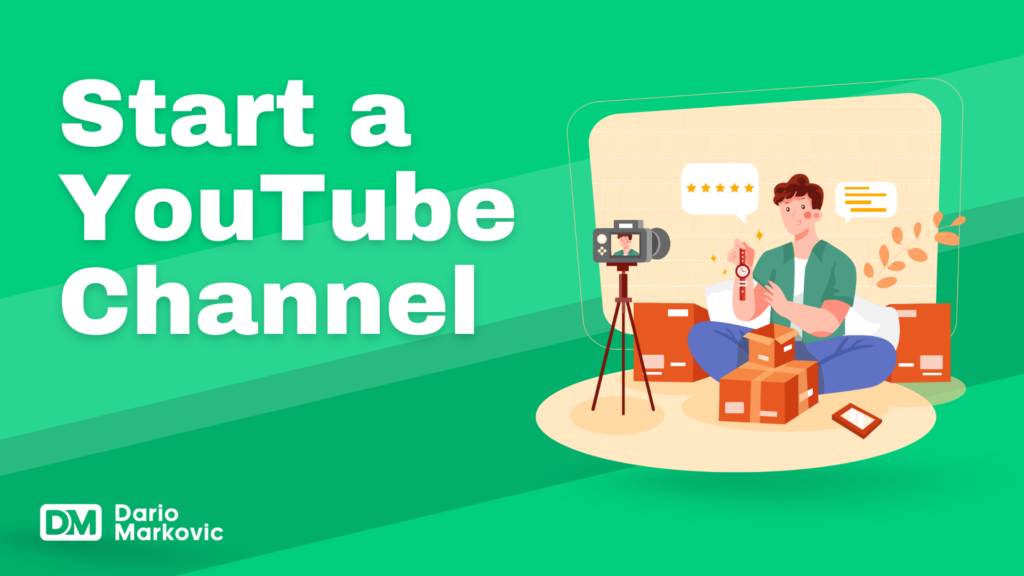
Getting Started with YouTube
Define Your Channel Concept:
Identify your niche and target audience
Research trending topics and successful channels in your niche
Develop your unique angle or value proposition
Set Up Your Channel and Equipment:
Create and optimize your YouTube channel (logo, banner, description)
Invest in basic equipment: camera, microphone, lighting, editing software
Plan your shooting space and background setup
Develop a Content Strategy:
Create and Optimize Videos:
Focus on solving problems or entertaining your target audience
Optimize titles, descriptions, and tags for search
Create eye-catching thumbnails with tools like Canva
Include calls to action for subscribers and engagement
Build Your Audience and Monetize:
Promote videos across social media platforms
Engage with your audience through comments and community posts
Apply for the YouTube Partner Program once eligible
Explore additional revenue streams (affiliates, merchandise, sponsored content)
Case Study: Successful YouTube Channel
DIY Solutions was started by Michael, who began filming simple home repair tutorials in his apartment.

Niche Selection: Budget-friendly home repairs and improvements
Equipment: Started with just a smartphone camera and basic editing software
Content Strategy: Weekly videos showing step-by-step solutions to common household problems
Growth Strategy: Focused on answering specific questions people search for (e.g., “How to fix a leaky faucet without calling a plumber”)
Monetization Mix: YouTube ads (40%), tool affiliate links (30%), sponsored content (20%), online courses (10%)
Audience Growth: Reached 10,000 subscribers in 6 months, 100,000 in 18 months
Monthly Revenue: $6,000 after 2 years of consistent uploading
Pros and Cons of YouTube
Pros:
Free to start with minimal equipment requirements
Built-in audience discovery through YouTube’s recommendation algorithm
Multiple monetization opportunities beyond ad revenue
Builds personal brand and can lead to additional opportunities
Videos continue earning revenue long after publication
Cons:
Highly competitive platform with millions of creators
Significant time investment for filming, editing, and optimization
Algorithm changes can dramatically impact visibility
Monetization requires meeting threshold requirements
Potential for negative comments and public criticism
Tips for Creating Engaging YouTube Content
Content Creation
Focus on solving specific problems your audience faces
Create “hook” openings that grab attention in the first 15 seconds
Maintain high production value with good lighting and clear audio
Develop a consistent posting schedule (weekly is often ideal)
Keep videos concise and well-paced to maintain viewer retention
Use pattern interrupts (changes in visuals, music, or speaking style) every 30-60 seconds
Optimizing for Search
Research keywords using tools like TubeBuddy or vidIQ before filming
Include primary keywords in your title, description, and tags
Create custom thumbnails with strong visual contrast and clear text
Front-load your descriptions with keywords and key information
Use timestamps to improve viewer experience and search visibility
Group videos into playlists to increase session watch time
Analyze your analytics to understand which content performs best
Building a Community
Building a loyal community is crucial for long-term success on YouTube.
Here’s why it matters and how to do it effectively:
Importance of Community Building
Loyal viewers watch more of your content, improving algorithm performance
Community members are more likely to engage, boosting video visibility
They provide valuable feedback to help improve your content
Strong communities attract brand partnerships and sponsorships
Community members become advocates who share your content
Effective Community Building Strategies
Respond to comments, especially in the first 24-48 hours after publishing
Create community posts to maintain engagement between video uploads
Ask questions in your videos to encourage comment engagement
Host live streams to interact directly with your audience
Feature viewer comments or contributions in future videos
Create community-specific language, inside jokes, or channel traditions
Develop channel memberships with exclusive perks for supporters
Establish a presence on other platforms (Discord, Instagram, etc.) to extend engagement
By focusing on both quality content creation and community building simultaneously, you’ll be better positioned to grow a sustainable channel that can weather algorithm changes and evolve with your audience over time.
7. Developing Mobile Apps
The development of mobile apps presents a profitable automated business idea capable of generating a consistent stream of passive income.
According to Sensor Tower, consumer spending in mobile apps reached $133 billion in 2021, showing the immense potential of this market (Source: Sensor Tower Report, 2023).
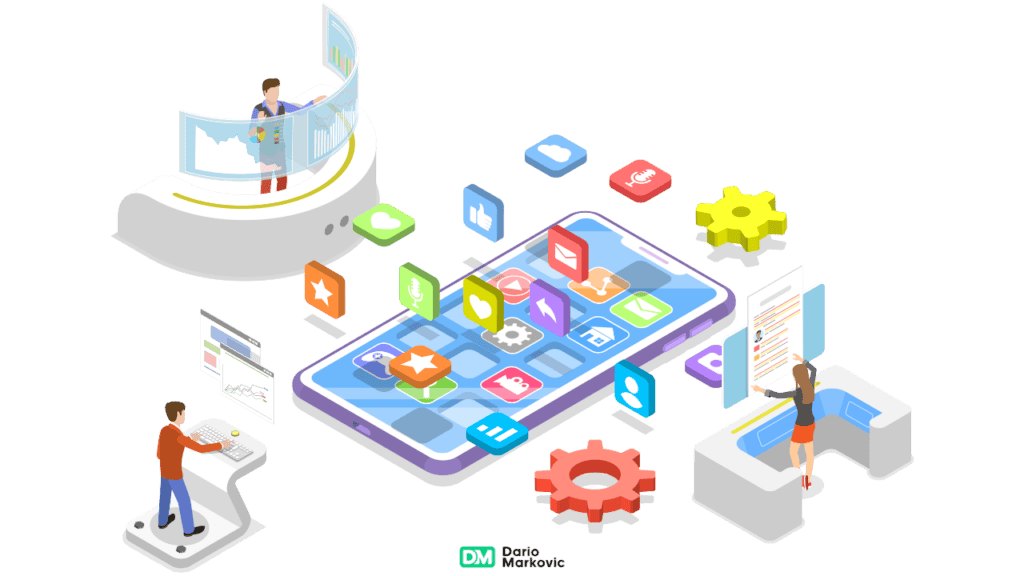
Getting Started with Mobile App Development
Identify Market Needs:
Research current trends and customer demands
Analyze app store rankings and popular categories
Look for gaps in the market that your app could fill
Plan Your App Development:
Create wireframes and user experience flows
Decide between native, hybrid, or web app development
Consider hiring developers if you lack technical skills
Build and Launch Your App:
Develop a minimum viable product (MVP) to test your concept
Conduct beta testing with a small user group
Incorporate feedback before full launch
Submit to app stores with optimized listings
Implement Monetization Strategies:
In-app purchases for premium features
Download fees for app installation
Sponsored posts or advertisements
Monthly or annual subscription models
Maintenance and Growth:
Regularly update your app based on user feedback
Implement analytics to track user behavior
Develop marketing campaigns to increase downloads
Consider expanding to multiple platforms
Case Study: Successful Mobile App
TaskSimple was created by Sarah, who identified a need for a more intuitive task management app.

Niche Selection: Productivity tool focusing on visual task organization
Development Approach: Hired a freelance developer while handling design herself
Monetization Strategy: Freemium model with basic features free and advanced features requiring subscription
Marketing Tactics: App store optimization, content marketing, and partnerships with productivity bloggers
Growth Metrics: Reached 50,000 downloads in first year with 15% conversion to paid tier
Monthly Revenue: $8,500 after 18 months with minimal ongoing maintenance costs
Pros and Cons of Mobile App Development
Pros:
Scalable business model with minimal marginal costs
Multiple monetization options to maximize revenue
Potential for viral growth through word-of-mouth
Automation handles user acquisition and payments
Builds valuable intellectual property
Cons:
Significant upfront development costs
Highly competitive marketplace
Ongoing maintenance and updates required
Platform policies and requirements may change
Marketing costs to stand out among millions of apps
App Store Optimization (ASO) and App Marketing
App Store Optimization is the process of improving your app’s visibility in app stores to increase organic downloads. Here are key elements:
App title and keywords: Incorporate relevant keywords that users might search for
App description: Clear, compelling description highlighting key features and benefits
Screenshots and videos: High-quality visuals showcasing your app’s interface and functionality
Ratings and reviews: Positive reviews boost visibility and credibility
App updates: Regular updates signal active development and maintenance
Beyond ASO, effective app marketing strategies include:
Paid advertising (Apple Search Ads, Google Ads, social media ads)
Content marketing and SEO for your app’s website
Influencer partnerships
PR outreach and media coverage
Cross-promotion with complementary apps
High Cost of App Development
App development can be expensive for several reasons:
Development complexity: Building for multiple platforms (iOS, Android) requires different expertise and technologies
Design requirements: Modern users expect polished, intuitive interfaces
Backend infrastructure: Many apps need servers, databases, and APIs
Skilled labor costs: Experienced developers command high salaries ($100-150K+ annually in the US)
Testing and quality assurance: Ensuring functionality across devices and OS versions
Ongoing maintenance: Regular updates, bug fixes, and compatibility with new OS versions
Security considerations: Protecting user data requires significant investment
Average costs vary widely based on complexity:
Simple apps: $20,000-$80,000
Medium complexity: $80,000-$150,000
Complex apps: $150,000-$500,000+
8. Selling Stock Photos: Capturing Passive Income
For photographers aiming to monetize their skills, selling stock photos constitutes an exceptional business idea.
According to GlobeNewswire, the stock photography market is valued at over $4 billion annually and continues to grow to $7,16 billion in 10 years with increasing digital content demands (Source: GlobeNewswire Report, 2024).

Getting Started with Stock Photography
Take High-Quality Photos:
Invest in professional equipment (camera, lenses, lighting)
Learn composition, lighting, and editing techniques
Focus on in-demand subjects and themes
Develop a unique photographic style
Choose Stock Photo Platforms:
Research major sites like Shutterstock, Adobe Stock, and Getty Images
Compare commission structures and requirements
Consider exclusive vs. non-exclusive licensing options
Set up professional portfolios on selected platforms
Optimize Your Images:
Use relevant and searchable keywords in titles and descriptions
Tag images properly to improve discoverability
Include model releases for photos with recognizable people
Ensure technical quality meets platform standards
Market Your Portfolio:
Build a personal brand and website showcasing your work
Use social media to increase visibility
Network with potential commercial clients
Create collections around popular themes
Scale Your Business:
Analyze sales data to understand popular images
Expand your portfolio based on trending categories
Consider hiring other photographers or buying images
Diversify across multiple platforms
Case Study: Successful Stock Photographer
NatureScapes was started by David, who turned his hiking hobby into a profitable stock photography business.

Niche Selection: Natural landscapes, wildlife, and outdoor adventure scenes
Equipment Investment: Professional DSLR camera, wide-angle and telephoto lenses
Content Strategy: Monthly photo trips to national parks and unique natural locations
Business Model: Non-exclusive licensing across five major stock sites
Portfolio Growth: Built collection of 2,000+ images over three years
Monthly Revenue: $3,200 with completely passive sales process
Pros and Cons of Stock Photography
Pros:
Images can generate income for years after creation
Platforms handle sales, licensing, and distribution
Flexibility to shoot what and when you want
Low ongoing time commitment once portfolio is established
Complements freelance photography services
Cons:
Highly competitive market with professional photographers
Significant upfront time investment to build portfolio
Per-image revenue has declined over time
Need to constantly update portfolio with fresh content
Success requires technical skill and artistic vision
9. Licensing Music: Melodies That Make Money
Music licensing presents a potent method for generating passive income.
According to GlobalNewswire, the global music publishing market reached $6.8 billion in 2023 and is estimated to reach $13,7 billion by 2032, with significant growth in digital media usage (Source:GlobalNewsWire, 2024).

Getting Started with Music Licensing
Create Marketable Music:
Invest in quality recording equipment and software
Develop skills in composition and production
Study popular styles and trends in licensed music
Create diverse tracks for different licensing needs
Submit to Music Libraries:
Research reputable libraries like Epidemic Sound, Artlist, and AudioJungle
Understand exclusive vs. non-exclusive licensing options
Prepare proper metadata and descriptions for tracks
Develop a consistent submission schedule
Understand Licensing Types:
Stock music (one-time flat fee)
Sync licensing (royalties for visual media usage)
Performance rights (royalties when music is played publicly)
Mechanical rights (royalties from reproductions)
Maximize Earnings:
Register with performance rights organizations (PROs)
Create instrumental versions of vocal tracks
Produce loopable segments for extended usage
Develop themed collections for specific industries
Build Industry Relationships:
Network with music supervisors and content creators
Develop direct licensing relationships with production companies
Create a professional website showcasing your catalog
Use social media to promote your music library
Case Study: Successful Music Licensing
SoundScapes was founded by Maria, who started creating ambient tracks in her home studio.

Niche Selection: Atmospheric and emotional instrumental music
Production Setup: Home studio with digital audio workstation and quality microphones
Licensing Strategy: Mix of exclusive deals with premium libraries and wider distribution
Content Volume: Created 5-10 new tracks monthly, building a catalog of 300+ pieces
Industry Focus: Specialized in tracks for documentaries and corporate videos
Monthly Revenue: $4,500 from combined licensing sources after two years
Pros and Cons of Music Licensing
Pros:
Single tracks can generate revenue for decades
Multiple licensing opportunities for the same compositions
Libraries handle marketing and client relationships
Complements other music-related businesses
Freedom to create within commercially viable styles
Cons:
Requires musical skill and production knowledge
Highly competitive market with many composers
Success depends on creating commercially appealing music
Can take time to build substantial catalog and income
Rights management can be complex
10. Offering Virtual Services: Remote Expertise on Demand
Virtual services can generate passive income through systemized and automated business operations.
According to Upwork, in 2023, 38% of the US workforce, 64 million Americans, performed freelance work, with virtual services being a major component (Source: Upwork Freelance Forward Report, 2023).

Getting Started with Virtual Services
Identify Your Skills:
Conduct self-assessment of strengths and expertise
Research market demand for various virtual services
Consider specializations like virtual bookkeeping, graphic design, content writing, or social media management
Develop service packages that can be systematized
Set Up Your Business Infrastructure:
Create a professional website and service descriptions
Implement client management systems
Develop standardized processes and templates
Set up secure payment and communication channels
Use Automation Tools:
Implement scheduling tools like Calendly
Set up video conferencing with Zoom or Google Meet
Use project management software like Asana or Trello
Automate workflows with Zapier or IFTTT
Set up email marketing with Mailchimp or HubSpot
Develop Service Delivery Systems:
Create standardized onboarding processes
Develop knowledge bases and client resources
Build templates for common deliverables
Consider hiring and training assistants for scalability
Market Your Virtual Services:
Target ideal client profiles through focused marketing
Develop case studies and testimonials
Implement referral programs and incentives
Use content marketing to demonstrate expertise
Case Study: Successful Virtual Service Provider
TaskPro Virtual Services was founded by James,who systematized his administrative skills into a virtual assistant business.

Niche Selection: Executive support for small business owners
Business Model: Tiered packages with clearly defined deliverables
Automation Implementation: Created systems for client onboarding, task management, and reporting
Team Structure: Started solo then hired and trained three assistants as the business grew
Client Acquisition: Content marketing focused on productivity for entrepreneurs
Monthly Revenue: $12,000 with 60% profit margin after implementing automated systems
Pros and Cons of Virtual Services
Pros:
Low startup costs with minimal equipment needs
Flexibility to work from anywhere with internet access
Scalable by adding team members or automation
High profit margins with minimal overhead
Ability to specialize in high-value niches
Cons:
Requires strong time management and client communication
Competition from global service providers
Potential for scope creep without clear boundaries
Client expectations for immediate availability
Business growth may reduce passive nature
These tools can help your business operate efficiently.
11. Creating Membership Websites
Membership websites offer exclusive content to paying members.
According to Subscription Economy Index, subscription-based businesses grew 5-8 times faster than traditional businesses in recent years (Source: Zuora Subscription Economy Index, 2023).

Getting Started with Membership Websites
Choose a Niche:
Identify underserved communities with specific needs
Research competition and member expectations
Develop unique value proposition for your membership
Consider your expertise and content creation abilities
Set Up Your Platform:
Select appropriate membership software (MemberPress, Kajabi, etc.)
Design user-friendly website and member areas
Implement secure payment processing
Create tiered membership levels if appropriate
Develop Premium Content:
Create cornerstone content that demonstrates value
Establish a content calendar for regular updates
Consider different content formats (articles, videos, tools)
Develop exclusive resources and member benefits
Build Community Engagement:
Set up forums or discussion groups
Create networking opportunities for members
Host live events or Q&A sessions
Facilitate member-to-member connections
Retain and Grow Membership:
Implement automated onboarding sequences
Develop systems to prevent member churn
Create referral programs for existing members
Continuously survey members for improvement opportunities
Case Study: Successful Membership Website
InvestorCircle was created by Elena, who built a community for real estate investors.

Niche Selection: Investment strategies for residential real estate
Platform Choice: WordPress with MemberPress plugin
Content Strategy: Monthly market analyses, deal calculators, expert interviews
Community Features: Deal sharing forum, local meetup coordination, expert office hours
Pricing Model: $49/month or $470/year with 70% choosing annual option
Monthly Revenue: $15,000 from 400 members after 18 months
Pros and Cons of Membership Websites
Pros:
Predictable recurring revenue model
Content creation becomes more efficient over time
Members often remain subscribed for years
Community building creates strong retention
Automation handles billing and content delivery
Cons:
Requires consistent content creation and community management
Significant upfront work before launching
Member expectations for regular new content
Competitive landscape with many membership options
Need for continual value demonstration to prevent cancellations
Common Pitfalls to Avoid
Please avoid these pitfalls in automated business ideas:
Overlooking Customer Service: Automation doesn’t mean neglecting customer interactions. Have systems in place to address inquiries and resolve issues promptly.
Ignoring Marketing: Even automated businesses need marketing to attract customers. Don’t rely solely on automation; develop a marketing strategy.
Underestimating Competition: Many automated business models have low barriers to entry, leading to increased competition. Differentiate yourself through branding, unique offerings, or exceptional customer service.
Falling for “Get Rich Quick” Schemes: Be wary of promises of instant riches with little effort. Building a successful automated business takes time and dedication.
Neglecting Legal and Ethical Considerations: Ensure compliance with regulations related to your business model, including data privacy, copyright, and consumer protection laws.
Not Adapting to Change: The online landscape is constantly evolving. Stay updated on new technologies, market trends, and customer preferences to remain competitive.
Essential Tools for Automated Business Success
In today’s fast-paced digital landscape, the right automation tools can transform your business operations. These three essential solutions will help you streamline workflows and boost efficiency:
AI-Based Chatbots
They provide 24/7 customer service by handling routine inquiries, offering basic support, and assisting with sales efforts. By implementing chatbots, you’ll reduce your support team’s workload while improving response times and enhancing customer satisfaction.
Graphic Design Software
It enables you to create professional-quality visuals quickly, even without design expertise. These tools help maintain consistent branding across all your marketing materials, from logos to social media graphics.
Landing Page Builders
This feature intuitive drag-and-drop interfaces and conversion-optimized templates. These tools empower you to create targeted pages that effectively transform visitors into customers without requiring technical skills.
By leveraging these powerful automation tools, you’ll free up valuable time to focus on strategic growth initiatives that drive long-term success and profitability.
Dario's Summary
Automated business ideas offer a pathway to generating passive income with a 4-5 hours in the first day-to-day intervention.
From dropshipping and affiliate marketing to selling digital products and creating membership websites, there are numerous opportunities for beginners to explore. Each business model leverages technology to streamline operations and maximize efficiency.
By taking action, staying adaptable, and continually refining your approach, you can achieve success in the landscape of automated online businesses.
Embrace these innovative automated business ideas and embark on your journey to financial freedom and entrepreneurial success.
Start building your dream business today!
Glossary
A automated business model where you earn commissions by promoting other companies’ products or services and receiving a percentage of each sale made through your unique referral link.
A set of rules or procedures followed by computers to solve problems or perform tasks, particularly in search engines for determining content ranking.
Software or applications that perform tasks with minimal human intervention, often used to streamline business operations.
A computer program designed to simulate conversation with human users, especially over the internet, used for customer service or information acquisition.
The percentage of website visitors who take a desired action, such as making a purchase or signing up for a newsletter.
The length of time a tracking cookie remains active in a user’s browser, determining how long an affiliate can earn commission from a referred customer.
A retail fulfillment method where a store doesn’t keep products in stock but transfers customer orders to a supplier who ships directly to the customer.
The buying and selling of goods or services using the internet, often referring to online retail shopping.
Content that remains relevant and valuable over a long period of time, not tied to seasonal trends or current events.
A warehouse where orders are received, processed, and shipped to customers
A purchase made within a mobile application, typically for premium features, virtual goods, or subscription services.
The process of researching and selecting relevant keywords to include in content to improve search engine visibility.
A standalone web page designed specifically for a marketing or advertising campaign, focused on converting visitors into leads or customers.
A website that offers exclusive content or services to subscribers who pay a recurring fee for access.
The process of generating revenue from a website, app, or online platform through various methods like advertising, subscriptions, or product sales.
A specific segment of a market focused on a particular product or service that appeals to a specialized group of consumers.
Earnings derived from ventures in which a person is not actively involved, typically continuing after the initial work is done.
A business model where products are printed only when ordered, eliminating inventory and reducing risk.
Payments made to creators or rights holders for the use of their intellectual property, such as music, writing, or images.
The practice of increasing the quantity and quality of traffic to a website through organic search engine results.
Professional photographs that are licensed for specific uses, sold through agencies or platforms to businesses and individuals.
The process of licensing music for synchronization with visual media like film, television, advertisements, or video games.
Remote administrative support provided to businesses or entrepreneurs, handling tasks like email management and scheduling.
A content management system (CMS) used to create and manage websites, particularly popular for blogs and e-commerce sites.
A program that allows content creators on YouTube to monetize their videos through advertisements and other revenue streams.

